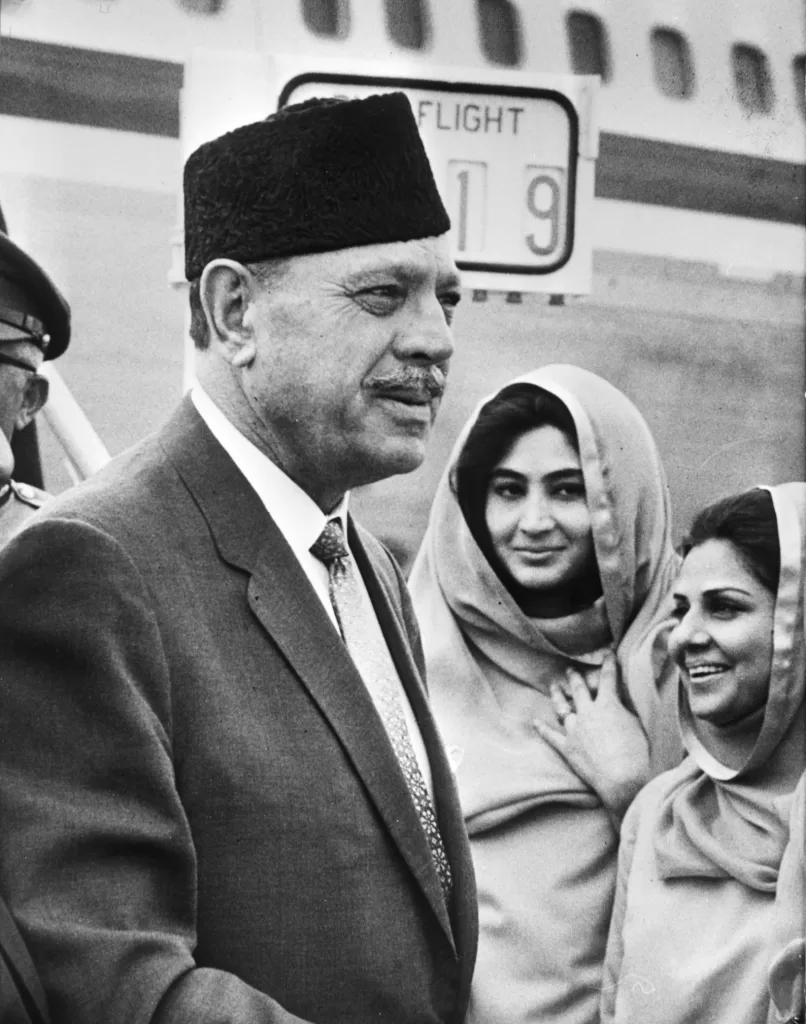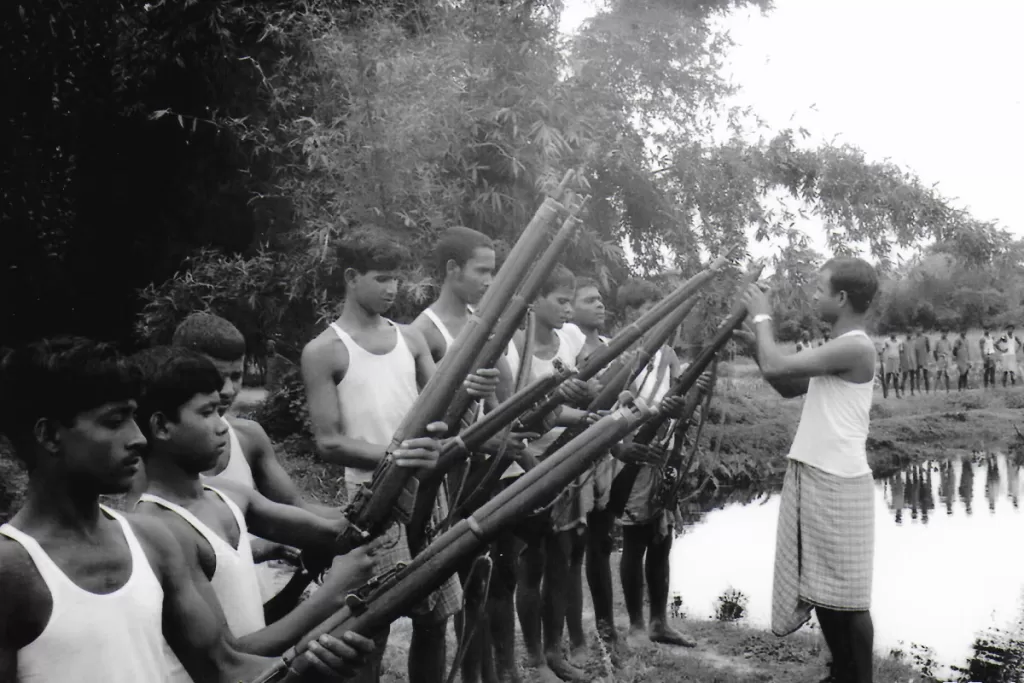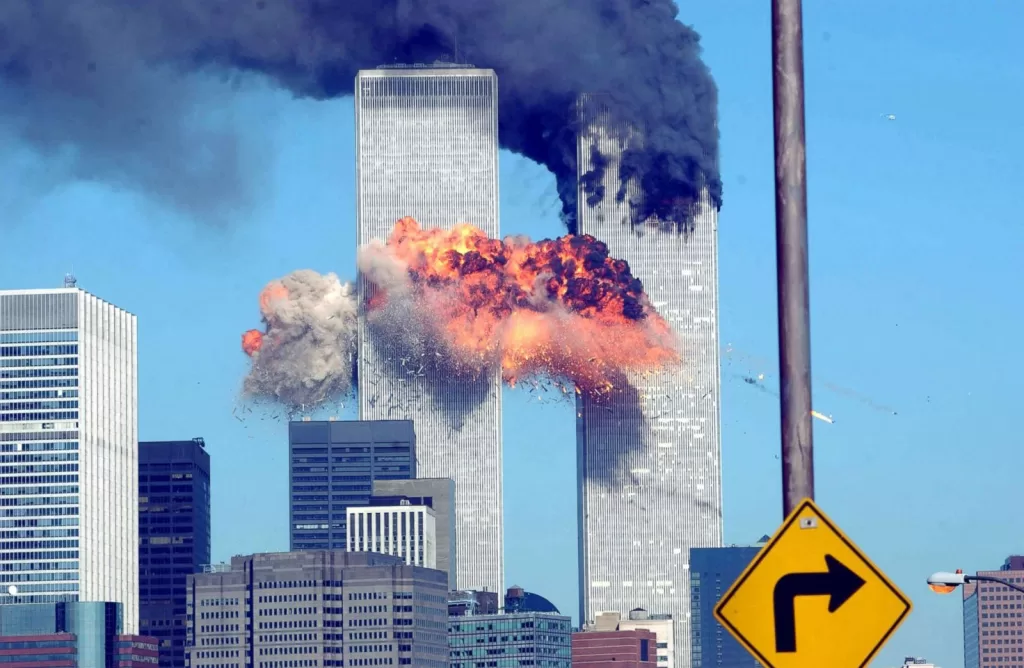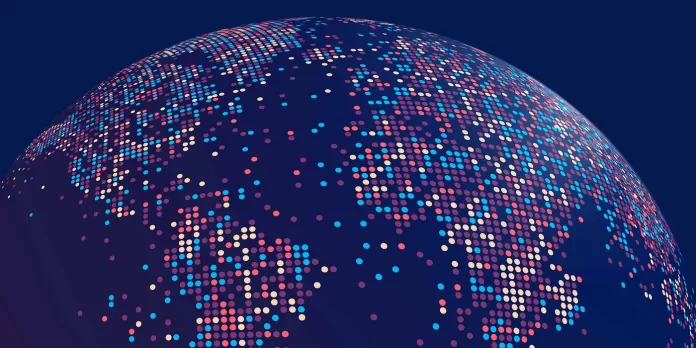“Those who make peaceful revolution impossible, make violent revolution inevitable.”
John.F. Kennedy, 35th US President (1917-63)
Conceptual Framework
For good or for worse, human society changes constantly; sometimes it evolves through processes such as globalization but sometimes it decays through civil wars, insurgencies or even breaks down leading to creation of new states and societies. Therefore, the societal leaders are confronted with the perpetual challenge of maintaining order within the society, whilst its various different and sometimes competing segments vie for power, authority and resources within the society and also with other societies with divergent interests or values. Moreover, they have the arduous task of reconciling the need for order within the society, with the competing demands and expectations of the citizenry of all hues and colors. Therefore, within the expectation gap of leadership’s ability to meet the divergent public demands of various segments of society and its resource constraints, lies the potential of political violence, riots, insurgencies, general turmoil and also the risk of terrorism, particularly for those individuals or groups who have a vested interest in challenging the political status quo or altering the hierarchical structure of the societal landscape.1
Terrorism can be defined as the systematic use of threat or actual physical force against civilian population by a non-state actor in an attempt to influence or alter a policy, the political process or the entire political system. Theoretically, here the term ‘non-state actor’ includes all actors not recognizing state sovereignty, including both the sub-state actor operating within a particular society like the Sri Lankan LTTE on a lower level or a transnational actor operating on a larger scale by challenging the entire international system and not merely a single state’s sovereignty and aiming to transform it at its own terms, like Al-Qaeda.
History, Rationale and Motivation
Although some strategic accounts attribute ‘The Zealot movement’, founded in 6AD as probably the first resistance movements, inspired by an ideology and employing guerrilla tactics and culminating in an act of mass suicide in 73AD2, the term ‘terrorism’ could be traced back to the name given to Robespierre’s Committee on Public Safety, which used mass executions to terrorize citizens during the French Revolution.3
Essentially, the non-state actors aspire to challenge the post-Westphalian state by challenging its sovereignty over its population, territory or resources through the use of violent force to highlight their own power and ability to disrupt and also the lack of control of state structures, particularly towards the security of the state, its citizens, area and its resources.
The groups which resort to violence against state structures or civilian populace differ in nature, types, goals, size and motivations. Whilst some groups may consist of criminal individuals which do not have a definitive vision of a radically transformed society or those who aim to destroy the rule of a particular type or class within the society on the basis of different or opposing values or difference in the interpretation of group or societal interests others may include Nationalists with specific secessionist, ethno-cultural, racial, decentralization or regime-ouster related goals with a relatively broader societal agenda and support base. A third more ambitious type of groups are those which could aspire to seize, control and redefine the entire political system and eventually bring about a systemic change.4
Quest for identity, particularly for marginalized minority groups within the social strata sometimes lead to violence against other majority groups or government structures and the techniques and tactics used by such groups is a consequence of their aspirations rather than a goal in itself. Therefore, use of violence is a means to a political end rather than an end in itself. Hence, whilst their violent behavior may seem to many as criminal or senseless, it is seldom devoid of a political agenda, even if it is not overtly espoused or popularly understood or subscribed to. Terrorist acts orchestrated on a frequent, indiscriminate or large-scale could lead to the weakening of governmental control and erosion of authority, leading towards a popular perception of hopelessness and insecurity, distrust of government effectiveness or even actual realization of anarchy within a society.

Modus Operandi
Despite popular belief, such a chaotic situation, nonetheless, could only create those conditions and opportunities which a terrorist group or groups hope to exploit in order to either enhance their power within the social structure, or if the scale or impact of their terrorist actions is wider and deeper enough, in the secondary phase, they could even attempt to alter the entire social and political hierarchical order by alienating and delegitimizing the existing political elite and replacing them by marrying and justifying their actions with a particular ideological framework. Therefore, from a political science perspective, one can argue that besides and beyond the resort to violence, even ideology could be considered as an interim instrument for the justification and eventual realization of political objectives for a group which uses it, in order to carve out a unique niche at a higher social strata for itself, which is recognized and legitimized in the form of an old or new, indigenous or borrowed but distinct sociological identity and original or artificial historical reality. In order to contextualize the above argument from a South Asian historical framework, the words of the Pakistani President Ayub Khan merit a careful consideration:
“The fight with the mullah is political. It started from the time of Sir Syed. The mullah regards the educated Muslims as his deadliest enemy and the rival for power. That is why several of them opposed Pakistan and sided with the Congress. They felt that with the help of the Hindus they will be able to keep educated Muslims out of power. So we have got to take on all those who are political mischief-makers. This battle, though unpleasant, is unavoidable. It has to be waged sometime or the other in the interest of a strong progressive Pakistan.” 5
Key Factors
Although terrorism has remained a popular subject of much mainstream literature and intellectual discourse, however, one way to analyze violence-prone groups is to carry out their comparative case studies and some of the main categories of factors evoking interest among social scientists include a broad and diverse spectrum of factors such as organizational, class and hierarchical structures, ideology, history, geography, demography, political culture, political economy, popular support, distribution of resources, leadership, idiosyncratic factor, communication, weapons, funding and external support.67 Some experts are of the view that whilst economic deprivation may not be the main cause of any group resorting to violence and using terror techniques against unarmed civilians but is a contributory factor towards establishing pubic sympathy and expanding its support base within a society or a particular segment of it with deep and large economic divisions within the social strata. Such divisions not only create a window of opportunity for those aspiring to challenge or change the political status quo within the society it also helps them in legitimizing their violent actions, particularly against those wielding power and exercising monopoly over resources and opportunities within the social milieu.

State Proxies?
Moreover, in some instances, insurgent groups have been used as proxies by various states to pursue what they perceive, interpret or claim as their national interests. As part of sub-conventional warfare, sometimes certain states directly or indirectly assist certain non-state actors in other states’ own or controlled territories as a strategic tool, in order to force the other state into bargaining with itself from a domestically weak and strategically disadvantageous position, with the first state being in a position of escalation dominance, sometimes without risking all out war between the two states, or sometimes, even in tandem with a conventional war, as was the case of Indian armed forces assisting the Mukti Bahini insurgent group, both before and during the East-Pakistan conflict in 1971.8
Effects and Consequences
Violence orchestrated by groups or individuals could be aimed at creating a variety of conditions, effects or responses in the form of expression of frustration, publicity of grievances to national or international audiences (thanks to the rapid rise of electronic media and free press), demonstration of power, unraveling of state structure, enhancing the popular perception of insecurity, creating a situation of anarchy, weakening the government control and authority, rendering the territory ungovernable, avenging and highlighting the repression and suppression of political elite or the ruling class, widening the trust deficit between state and the people and eventually creating conditions of a civil war leading to a large-scale and complete breakdown of non-violent political processes and state structure. Louise Richardson, the Executive Dean of the Radcliffe Institute of Advanced Study at Harvard University has encapsulated the dominant motives of terrorist organizations into three key but comprehensive terms – revenge, renown and reaction.9
Inherent Limits to an Objective Analysis
In short, the phenomenon of terrorism, due to its frequent, large-scale and indiscriminate role in contemporary international, inter-state and intra-state politics, remains a complex but popular subject that evokes much public interest and emotions but the discourse is seldom devoid of controversy and passion, as it is very difficult to cleanse the lens of any viewer from his or her ethno-centric value system, firmly rooted in thousands of years of intertwined and checkered fabric of history, religion and politics.
Structural Constraints of Modern State and the Future of Terrorism
Lastly, despite the huge effort and interest being invested by various states at different positions within the volatile contemporary international system, it is unlikely that the modern era of terrorism will leave us in the foreseeable future, primarily due to three factors, all of which are beyond a state’s control. Firstly, thanks to the rapid advances in the multi-dimensional communication technology, the fruits of industrial revolution, which enlighten, equip and arm the 362 year old ‘Westphalian State’ are also available to its challengers, operating at various levels, both at the sub-state and trans-state echelons.
Secondly, from a realist paradigm, state remains the principal political institution within the anarchic international system and the recognition of the concept of its sovereignty gained currency when the state managed to legitimize its exclusive monopoly over power, territory and populace. The history of human social evolution is an extended epic of constant confrontation between those aspiring to retain and those challenging this exclusivity of monopoly over its people, resources and territory, exercised through the legitimized use of force, in the form of laws. For most part of the past three and a half centuries, the Westphalian State’s main challenge to its sovereignty has primarily come from other states, sometimes for prestige, sometimes for dominance and sometimes for land, resources, opportunities, markets and other advantages. The cost and outcome of this perpetual inter-state rivalry orchestrated over land, sea, air and now even space, has obviously been both high and sobering. During the Industrial or the current information age, so far, no state, no matter how big, wealthy or powerful, run, developed, modified or created on the Westphalian model has always managed to win against all the other states in this perpetual and global quest for power, influence and resources, or not purchased its territorial or economic security by compromising on the traditional concept of sovereignty. Therefore, it is unlikely that the current battle between the still evolving political institution of state and its newest challenger, which is operating both beneath and beyond its control, will be the last, or that all the states will always win against all the non-state challengers.
Thirdly, based on its experience of fighting with other states of similar type and structure if not system and size, the traditional warfare strategies employed by the state actually enhance its vulnerabilities rather than reduce it. The two modern antagonists may be unequal but are different and are conducting their battles in different dimensions, but due to the state’s inability or unwillingness to transform itself to the changing environment, terrorism is fast becoming difficult for the traditional state structures to cope with. What once was considered to be the state’s biggest strength against another state has now become its biggest weakness against the non-state actors. In the present Uni-polar international system, what once offered the United States’ decisive and overwhelming advantages over its adversarial and introvert Eastern pole in the not-too-distant past, in the form of a large and independent industrial base, high-tech weapon systems, free media, global allies and overseas bases across all continents, have in the current asymmetrical warfare, become the biggest targets of opportunity for its dominant challenger, Al-Qaeda. Let us look at just a few of these. The bigger or more formal the state structure, the slower, rigid and more cumbersome its decision-making process and less flexibility it has in adapting to changing political, economic or security environment; larger the size of military, economy and industry, more numerous and bigger the targets of opportunity it presents to terrorists; the more technology dependent state’s intelligence sources, the less effective it is against a less technology-dependent adversary; the more educated, cultured and sophisticated its population, the lower such society’s pain threshold for violence; bigger the media industry and the more freedom of public speech, swifter, larger and deeper the impact of terrorist’s gains on society, industry, economy and higher the perception of state’s inability to provide public security; longer the conflict, less stable the polity and economy and the more difficult for democracy to inspire confidence and deliver within a welfare state model.

Future of 21st Century State in an era of Terrorism
The 9/11 attacks shook the entire international system, forced the dominant superpower to respond with vengeance and on the societal level, subordinated personal freedoms and civil liberties to the classical Realist concept of security, which again became the dominant concern of both the state and the individual. But after almost a decade of vengeance during which the world has lost thousands of lives of both combatants and non-combatants and hundreds of billions of dollars, we are still far from securing the state from the inconspicuous non-state actor, which has become stronger, wiser, more capable and more survivable. Therefore, for the state to successfully encounter this latest challenge, under a fast-changing environment, it needs to respond by changing not just its military tactics and campaign strategies but probably also critically reviewing its own system and structures under which it operates and which also help create the very circumstances which facilitate and breeds the terrorists. Whether the state, which despite the accelerating phenomenon of globalization, is still the largest sovereign political structure within the turbulent international system, is capable or willing to evolve or not, nonetheless, for good or for the worse, the changing circumstances and environment almost forces the human society to constantly evolve.
Despite prevailing over the Soviet model two decades ago, the success of the transformational Chinese model, on which the US economy and hence its both hard and soft power increasingly and heavily depends today, has proven that one needs to think out of the US post-World War II model box and think of ways for transforming the state into a newer, globalized model which is more patient, just and magnanimous with itself and its increasingly demanding and perpetually competing citizenry, able to moderate and calibrate its hostility towards other states and trans-state actors in such a fashion which allows it to rely less on hard power and military muscle to achieve key and long-term policy objectives and as a result also does not erode its soft power, which is increasingly becoming relevant and necessary for conflict resolution, management and transformation.
As a result, the security and survival of the Westphalia state will depend on its ability to transform itself from its rigid, traditional structure inspired by the ages of discovery, colonization, Renaissance and subsequent industrial, individual-centric, gender and environmental revolutions, to a more contemporary, flexible, robust and dynamic state structure suitable to the modern information age, which may or may not be entirely identical to the prevalent and popular Western democratic, welfare state model based on an open, liberal, and individualistic society, dominated by its working class, employed primarily in industrial and service sectors, considered as ideal during most of the post world war II or cold war-era society.
The popular, political and media reaction and perspective transformation following the events of 9/11 and other similar incidents in the Western world have raised serious questions regarding the depth, strength, viability and endurance of the secular value system of the Western society, long deemed as the proud core of a modern, enlightened and liberal polity where religion and politics remain separate domains with little mutual overlap. Without a sustained ideological dialogue between East and the West in tandem, a strategic dialogue between the dominant Superpower and its oriental allies, albeit with a common purpose but different value systems, will not resolve the challenges posed by both the prevalent inter and intra-societal conflict, which provides both the oxygen and political space to the extremists and terrorists of different shades across the globe.
In order for the 21st century state to cope with the multi-dimensional challenges to its security and stability, it aught to be more flexible, in order to synergize itself with the inherent, common and permanent features of the anarchic yet globalized and volatile yet increasingly interdependent international system. The human mind, circumstances and environment constantly change so it makes sense that the human political structures also need to undergo metamorphosis in order to reflect, envelope and accommodate those changes in the greater and long-term common interest of human civilization’s safety and survivability, particularly in the absence of any central authority on a global scale. The 21st century state simply does not have the luxury of choice any more, not to evolve. To paraphrase the wise words of the US President John F. Kennedy in accordance with the modern setting cited at the beginning of this writing, that in response to complex political challenges, social evolution is a less costly solution than revolution.
References
1. Jackson, Robert. J. A Comparative Introduction to Political Science, Prentice-Hall, New Jersey, 1997
2. Michael Elliott-Bateman, ed., The Fourth Dimension of Warfare: Intelligence, Subversion, Resistance, vol.1, Manchester University Press, London. 1970
3. Jackson, Robert, J A Comparative Introduction to Political Science, Prentice-Hall, New Jersey, 1997. P.417.
4. Sederberg. Peter. C. Terrorist Myths, Prentice Hall, New Jersey, 1989
5. Craig Baxter, ed., Diaries of Field Marshal Muhammad Ayub Khan 1966-1972, Oxford University Press, 2007
6. Cordes, Jenkins, Kellen, A Conceptual Framework for Analyzing Terrorist Groups, Randa, California, 1985
7. Head & Rokke, ed., American Defense Policy, 3rd ed., Johns Hopkins University Press, Baltimore, 1973
8. Cheema, Z.I., Indian Nuclear Deterrence: Its Evolution, Development and Implications for South Asian Security, Oxford University Press, 2010
9. Richardson, Louise. What Terrorists Want: Understanding The Enemy, Containing the Threat, Random House, New York, 2006




